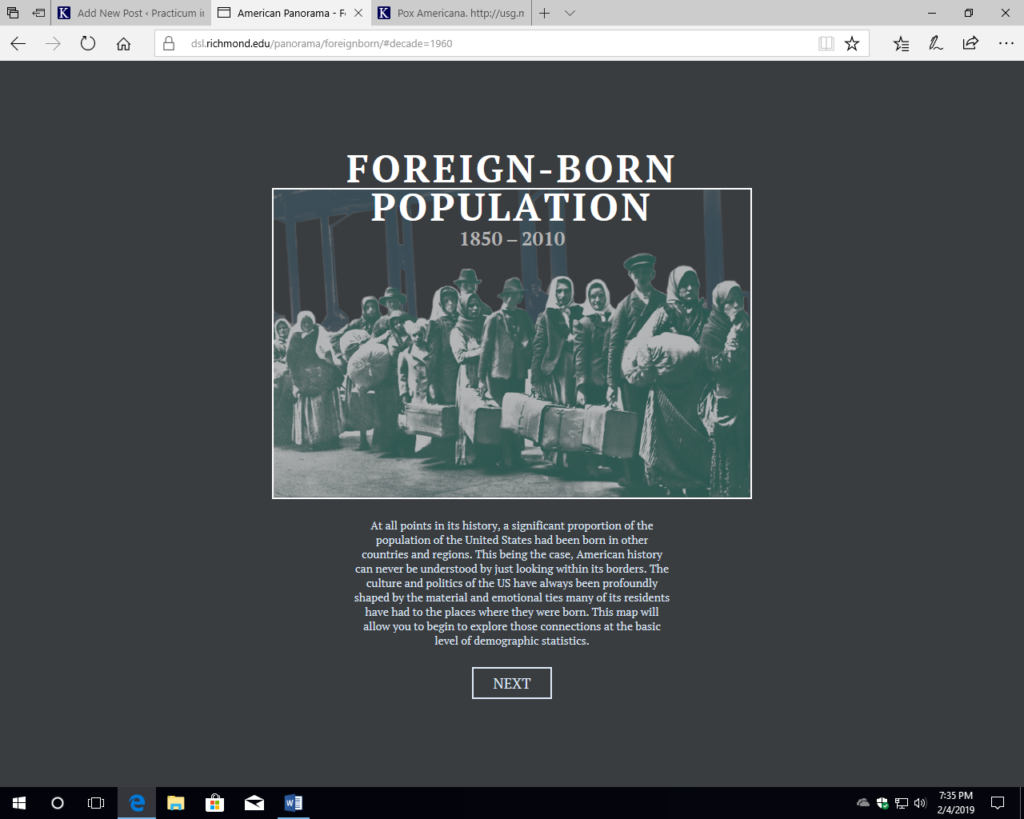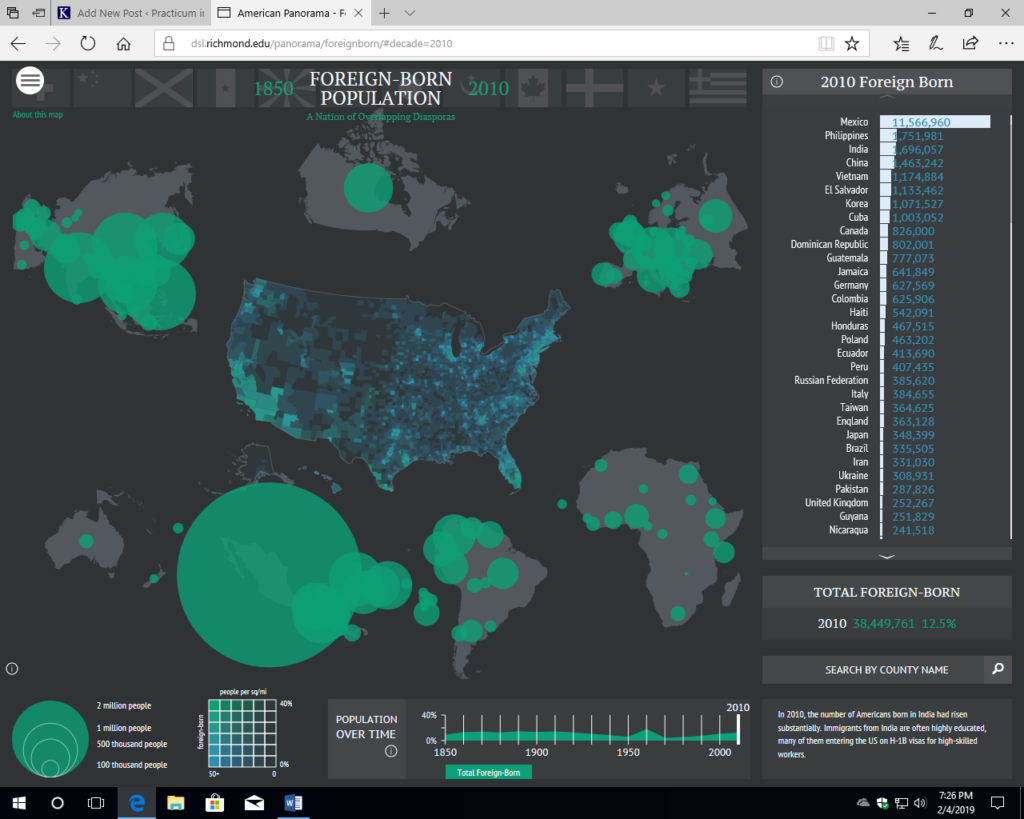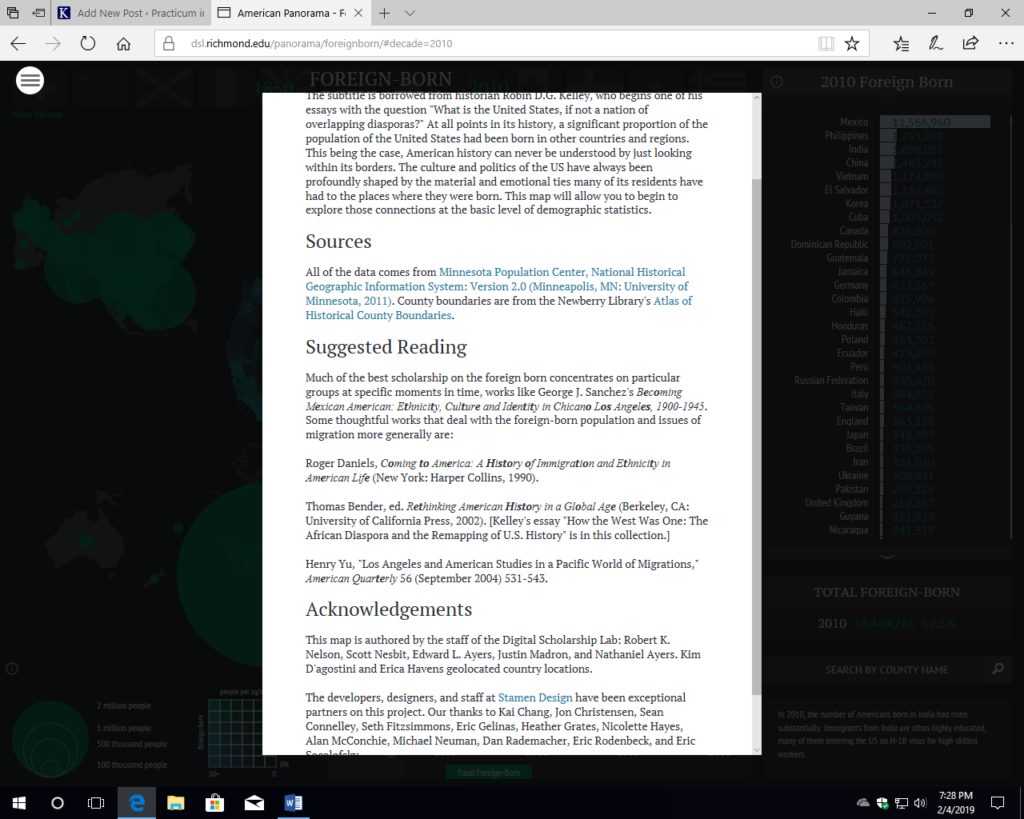Review: Foreign-Born Population 1850-2010
Foreign-Born Population 1850-2010. https://dsl.richmond.edu/panorama/foreignborn/#decade=2010. Created and maintained by the Digital Scholarship Lab partnered with Stamen Design, https://dsl.richmond.edu/panorama/foreignborn/#decade=2010. Reviewed January 27, 2019-February 4, 2019.
Utilizing U.S. census records and county boundaries from 1850 to 2010, supplied by the Minnesota Population Center and the Newberry Library, the project Foreign-Born Population 1850-2010aims to show that a significant percentage of America’s residents were born outside the country’s borders. In doing so, the ultimate goal of the Foreign-Born Population project is to argue that because so many of the country’s residents have been born elsewhere, it is essential that researchers, historians and the American people look beyond the country’s borders to fully understand the history and culture of the United States.

The most striking feature of the Foreign-Born project is the high level of interaction that users have with the website. Creating an interactive world map that allows users to select geographic regions within and outside of the United States, the project’s designers have developed an interesting digital platform to show the numbers and percentages of foreign born individuals from their points of origin to where they settled in America. Visitors to the site are then able to select from the years 1850 to 2010, in decade-by-decade increments, to view the fluctuation in immigration patterns of populations from different countries moving to the United States.

Due to the fast speed and ease of access in using the digital map, Foreign-Born does an excellent job in showcasing statistical data that supports the project’s main argument. It is exactly the map’s malleability to shift from one year and region to the next that makes the project much better suited on a digital platform than being shown in print. The impact of quickly tracking and visually seeing the fluctuations and percentages of foreign born residents, that is much faster with the click of a mouse than scouring data in an archive from one book to the next, makes a large impact in showcasing America as a melting pot.
This speed and ease of access in using the census data also makes Foreign-Born an important asset to a wide array of users. The interactive map allows you to view census records and immigration trends from a country wide perspective all the way down to each, individual county, making it a valuable tool for historians conducting both macro and micro studies. With free access to the site, the project is also a valuable asset to the general public and students looking to learn more about U.S. culture and immigration.
Although minor, there are a couple of things that visitors must be aware of while using the website. First, users must be careful to recognize that there are differences in how the census records were conducted from one decade to the next. For example, the census of 1960 included both individuals that were foreign born and their children under the same category. If users are not careful, then they might see this as a spike in foreign immigration for certain county’s, when immigration had actually declined from the previous decade. This change in census recording is indicated by the site, but is in relatively small print on the corner of the page.
Users must also understand that to fully appreciate the cultural traditions brought to the United States from foreign born residents, one must go beyond the statistical analysis of census records. It is necessary to read about, interact with, and talk to people from different cultural backgrounds to fully comprehend U.S. culture and provide agency to the many different groups and people living in America. Moreover, it is integral to recognize that the cultural practices of foreign born residents can change. The culture and traditions of a group can evolve and be influenced by other cultures and new environments. The project designers do include a list of suggested reading on the ‘About this Map’ section of the site that is accessible on the top, left-hand side of the map.

All-in-all Foreign-Born Population is an excellent interactive, digital project that easily showcases and proves through a statistical analysis of U.S. census records that American culture cannot be fully understood if one’s focus remains solely within the country’s geographic borders.